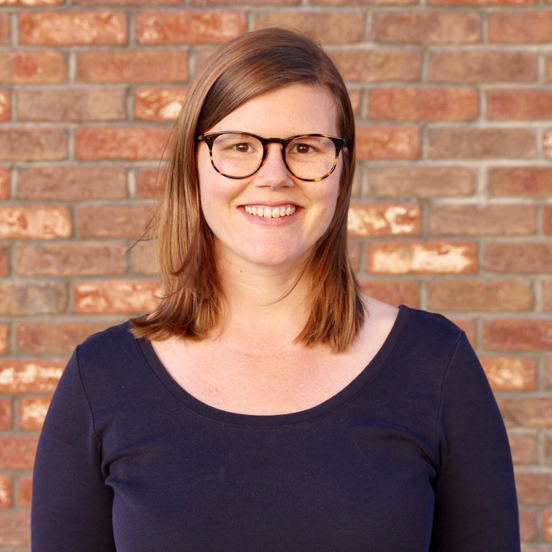About the episode
Last year, Hotjar launched its most ambitious content campaign to date: a slick, hyped-up podcast called The Humans Strike Back. But just a few months later, the show was on hiatus while the team tried to figure out where things went wrong.
Louis Grenier, Hotjar’s content marketing lead, joins host Matthew Kammerer to talk about what his team has learned from past mistakes, how they’re moving forward, and what kinds of results they’re already seeing. The big takeaway? Teams need to focus on marketing basics before they can channel content growth.
You can connect with Louis on Everyone Hates Marketers.
- [05:35] How do you connect with the rest of Hotjar’s marketing team?
- [07:27] How do you measure the paid team versus the content team dollar for dollar?
- [13:10] Has the content strategy changed at Hotjar since you first started?
- [19:40] What did you learn from launching the podcast with a drip campaign?
- [22:24] How did paid promotion for the podcast work?
- [23:40] What are early results from Hotjar’s customer experience survey?
- [30:14] Did you face any challenges with conducting the survey?
- [33:32] How do you keep a massive content piece up-to-date?
"I think the reason data-driven pieces are working well is because we are at saturation level when it comes to the number of articles we see every day."
Episode is brought to you by
-

Matthew Kammerer
Show Host -

Vanessa King
Producer -

Joshua Schnell
Producer
Show Transcript
Matthew: How did you first get started in marketing?
Louis: How long do you have for this one? The first thing to say is I started my career in marketing when I read this book that my brother had when I visited him in Paris more than ten years ago. In French it’s called Petit traité de manipulation à l'usage des honnêtes gens. At the time, I was studying mechanical engineering and was very bored. I wanted to build wind turbines originally, and I just fell in love with this book because it felt like something that was always in me that I never was able to harness.
This ability to say you understand people so well that you can give people what they want when they want it, you can really understand them at a level that they don’t understand themself and you can really provide and help them out through marketing and the product you sell. That really struck a chord with me.
After that book, I started to take steps into getting into marketing. It took me a few years after reading all the books from Seth Godin and all of that to actually work in marketing. It took me a few years of failing in my career working for a few companies where I wasn’t really happy and was doing nothing about marketing, and I was really into marketing at this stage because I was reading so many books.
I passed a diploma for an internship in digital marketing and that led me to have my first job in marketing from a mobile marketing startup. I stayed there for around 2-3 years and left to create my own company that failed because I burned myself out after two years. Then, I joined Hotjar a year and a half ago. So you can see, I’ve stumbled a lot, I’ve learned a lot, and I still don’t know what I’m doing.
Matthew: I think the more of us that admit that, the better. So what do you currently do at Hotjar?
Louis: I’m in charge of making sure that we help our users and non-users to improve their customer experience. We do that through helping out with articles, podcast episodes, videos, anything that they might consume wherever they are.
Matthew: What does your day-to-day look like? I imagine it’s pretty diverse.
Lous: I don’t want to fall into the cliches of saying, every day is never the same. But it’s kind of true in a sense. We are still a very small team. Hotjar has at this stage 70 people. We have a rather small marketing team—at the time of recording this episode we are 8 or 9. Of those, three people are in content.
To be clear, and I know we’re going to talk more about the Humans Strike Back, when I joined a year and a half ago as the content strategies and started to move on to leading the team, we did so many different things every day. We tried to launch a guide for software companies, we tried to launch the podcast, so every day is quite different.
But to try to answer in a no-nonsense manner, as of today what we do day-to-day is starting at 8 am. My day in the morning is 4 to 5 hours of uninterrupted work. I’ve realized that my brain works better in the morning doing strategic stuff. So it’s either thinking of an outline for a new article and trying to give that away to a writer. It could be strategizing for the next quarter about topics. Last week it could be reaching out to people for backlinks and shares because you have to do that nowadays.
So usually mornings are very intense work. That could be promotion, creation, strategy. And afternoons tend to be more calls and meetings with the team and making sure that everyone is aligned. I also tend to do interviews like this one in the afternoon because it’s much easier for me to focus in the afternoon for this type of task.
Matthew: I love the idea of splitting up your day like that. I wish I could set aside some time. I really should set aside some time for dedicated work. It feels like the day gets away so quickly with everything that’s happening. So in that marketing team of 8 or so, how do you connect with the rest of the marketing team?
Louis: That’s an excellent question because we failed at doing that until recently. We failed dramatically at doing that until recently. Our team, even though it was only 8 or 9 people, was very siloed. So on one side we had the paid team in charge of Adwords and Facebook ads and Syndicate ads and BuySellAds and all of that.
Then we had the experience team which is comprises of a designer, a developer, and a creative director who owned the brand and the brand positioning, who would design landing pages sometimes, or images for the blog. Then we had us, the content team, doing our own stuff to reach out goals. Three months ago, that was something like reaching as many people as possible using our blog.
All of those were not connected because we didn’t have one goal to go after. That might be surprising to hear from a company like Hotjar where you might think they have everything figured out and are flying. That’s not true, and everyone would be lying to say that.
We are still discovering a lot of things. We discovered for example that having one clear goal for the marketing team to align against is actually one of the best ways to move forward as a team. So, the answer is really that we are still figuring things out.
But we do have a goal, which is to generate marketing qualified leads as a team. So everyone aligns around the types of content we need to talk about, how we’re going to promote them, how we’re going to design them as a team. So the experience team, which is kind of the creative services team, the paid team, and the content team are now working together towards the same goal.
Matthew: So how do you measure the paid team versus the content team dollar for dollar? It seems like a challenging thing to do when content often feels top of funnel.
Louis: Same answer! We really struggle a lot for that, and we’re still struggling. We haven’t nailed our multi-touch attribution yet. We are still using Google Analytics and a little bit of Mixpanel. We still don’t understand the full journey.
We still don’t know from the very first time someone has heard of Hotjar until today, we still don’t know how many pieces of content they’ve been exposed to or how many ads they’ve seen. We still don’t know which one actually brought them to the site and made them sign up. Attribution is a very complex topic and I’m pretty sure everyone listening would agree. It’s very difficult to have the full understanding.
The first part of your question—how do we measure it? In paid, they definitely have stuff figured out. They know how much money we spend, how many customers it brings, they know the return on investment, they are measuring customer acquisition versus lifetime value to make sure that the ratio is healthy.
But what about someone seeing an ad, clicking on it, and signing up to Hotjar for free and then becoming a customer in 12 months? How do you measure the return on investment on that since it’s not that instant, right? It could be 12 to 18 months. We still don’t have that yet. We are working towards making sure we have a multi-touch attribution model in place at the start of 2019, but it’s not there yet.
In terms of content, it’s even worse. So, we know that we must have top of the funnel content, middle of the funnel content, bottom of the funnel content. We know we need a healthy mix of those unless your funnel is kind of broken. You can’t just bring people in at the top and then make them not convert. On the other hand, you can’t just have people at the bottom because you just feed them stuff that’s close to your business and people get bored. They don’t want to hear about Hotjar vs Crazy Egg all day. They want more inspirational stuff.
So, at the minute what we’ve made peace with is the fact that we can’t measure everything. We have imperfect data. What we know for sure is stuff like the amount of people who see our content and how many people end up signing up after landing on our page. That’s last touch attribution, so we roughly know how many signups content directly brings to the business. And we have a rough idea of first touch attribution, how many people land on the blog post and then sign up within 90 days.
We have a lot of imperfect data, but as marketers you need to make peace with the fact that you’ll never have perfect data and you need to work along first principles: things that you know will always work. It will always work to help people out with good content that’s practical and specific. It will always work to not rush to try to convert people with pop ups and all of that, because then you just kill the customer experience and your brand. So we are certain about certain things but we also know that we don’t know a lot of the rest, which is the multi-touch attribution. We don’t know how blog posts contribute to the overall picture just yet. But we are ok with that because we’re moving towards that, and we know that digital marketing isn’t a perfect science.
Matthew: It’s sometimes hard to convince leadership of that concept. Do you feel like everyone in the organization is on board with that?
Louis: Yeah. When people hire you, they trust you. They trust your judgment and trust you to do the best job that you can. So there are absolutely questions about the impact of content versus paid.
But the lines become very blurry once you start promoting content through paid, and once content starts to produce landing pages that paid can use as well. Definitely signups are something to measure, in particular marketing qualified leads. In particular those leads that have a lot of traffic, which is kind of the main way we segment them. If people have a lot of traffic, they’re more likely to become a customer.
So absolutely we report that on a monthly basis. We know how many signups we generate but there is still this black box of where those people are coming from. We know that roughly 40% of people come from word of mouth. How do you even start to measure that digitally? You cannot do that because most of the time it will be a brand search or a direct visit. So unless we have a multi-touch attribution system in front of us where we have a bit more detail, you just can’t answer that. You need to trust your brand and trust that a product is good enough that others will talk about it to move forward.
We are very thankful to have a team in leadership that understands that and knows that having data such as “it costs 9.88 euro for every lead you generate through retargeting”, and understanding that it can’t be true. You can’t have that much detail on a number because you don’t have the full picture. They understand that, but they also understand that we need to increase signups.
Matthew: Let’s dive into how content strategy has changed. Since you first started at Hotjar, how has the strategy changed around content?
Louis: Right, so when I started at Hotjar I had a lot of ambitions and was full of ideas. I started a think tank with myself just trying to come with as many smart ideas as I could to impress everyone and strategy that says we’re going to do that and that and that and that. It failed pretty quickly because I learned pretty fast that it’s all about getting stuff done and the ideas are worth nothing unless you execute on them in a lean way and learn.
One of the first projects we started was a guide for SaaS companies and we just did that because we had content for it already. Before I joined, Hotjar had organized a small event for small startups and we basically took all of the videos from the event and turned it into a guide. So there was no thinking in terms of is there demand for it? Is it actually something we want to write for our user personas? Does it actually make sense? Do we want to attract SaaS companies? Do we want to attract small SaaS companies?
We never asked ourselves these questions, we just did it. It went well, we launched on Product Hunt and all of that and then nothing. Just a huge spike and then no sign ups. And then it went back to the normal amount of traffic that we used to get. That was the first learning, which was when you write something you want to make sure it’s relevant to Hotjar the business and not just you and your ideas.
That was the first mistake. Then it evolved into understanding that we need to do more for our users. We started to write what we call education content. We started to write specifically for our own users on how to use the tool. But we never really used that content for non-users, people who could discover the tool but didn’t.
That really didn’t work so well because at the same time, we had this brilliant idea about the podcast, the Humans Strike Back, which is the second biggest mistake we’ve done. Even though the podcast itself was very successful in a few areas such as the ability to tell a story that people connected emotionally with, which is putting people first, it didn’t connect with the business. We had a huge silo where we were doing the podcast, everyone was proud of it for the first two months, and then they were like, “Uhm, hold on a second, is this helping Hotjar grow or is it just a brand play where there’s no tangible way to measure impact on the business?”
So people started to question that a lot, which makes total sense. The biggest learning there was yes, I’m happy that leadership let us do stuff and make mistakes and trust us to make those mistakes and to learn from them, on the other hand they really questioned the fact that it’s actually not bringing more sign ups to us. At the minute, we need more sign ups to grow the business.
That was a second big thing that we learned from. Then finally, three or four months ago, we started to really understand what we needed to do. We understand that we had to stay super lean: doing small stuff every week, shipping them and seeing what people think of them. Not planning three months or four months in advance before realizing it doesn’t bring any benefit to Hotjar. The second thing we learned was we needed to lean on other people who know more than we do. Let’s not try to have a think tank within ourselves, let’s reach out to people who have done what we want to do successfully.
We reached out to people from BigCommerce, we reached out to a lot of people in the industry and asked them how they would scale our blog from where it is to 100,000 - 300,000 visits a month and in turn generate more sign ups?
We asked others instead of just ourselves. Based on all of this learning, we said let’s just start publishing once or twice a week on the blog with really specific, actionable pieces that actually are relevant to our user persona and also non-users. Let’s start with that and see where it goes. Getting into this habit of shipping every day.
That got us to where we are now, I think we’ve tripled our traffic just by doing that and because we were all working on the same objective.
Matthew: Is season 2 on hold because of what you found from Season 1? Or are you planning to continue?
Louis: Originally, we weren’t planning to have seasons. That’s the first truth of it. The second truth was we decided to stop where we were because we knew we had to reconvene and take a step back and see if it is actually going to bring sign ups and bring people to see Hotjar and bring people to discover Hotjar.
Season 1 was great for the content itself, but it didn’t connect enough to the business. Season 2, we are still questioning if we want to wait a bit more. The way we want to treat the podcast is a way to talk again about specific things we wrote on the blog or interviews we’ve done instead of being its own entity on the site. For example, interviewing people about customer experience to talk again about the customer experience study that we did. Or talking about how to create personas using your website because that’s an article that’s quite popular and people liked it. So trying to merge that within our existing content calendar instead of trying to create yet another block and silo somewhere else.
Matthew: So you did something different when you launched Season 1 with that drip campaign. Was that particularly successful? What did you learn from that piece?
Louis: Yeah, so this is the kind of thing where we learned things work really well. So we took our time to reach out to people who knew about storytelling and email marketing to create an email sequence that would be really emotional for people to bring them to the podcast and understand what it’s about and more likely to reply to us so we can have conversations.
To give a bit of context to listeners, people would land on hotjar.com/humans and bring them to the landing page explaining the concept of The Humans Strike Back, which is about putting humans first and that you can succeed by putting people first instead of putting money first. The premise was that we had this exact mistake before by focusing too much on the numbers and not enough on the people behind them. So, basically sign up to learn more about this story.
The sequence was four to five emails that were a part of the same series. So you’d receive part one of the story, then there’d be a bit of a cliffhanger that brings you to part two, then part three, part four, and an action at the end.
The open rate was through the roof. The open rate for first, second, and third email were above 60%. Click-through rate was insanely high, like 15-20%. But more importantly what worked the best was replies. At the end of each email, we ask something like, “What do you think? Reply and let me know.” The day of the launch, we were advertising a lot on Facebook and stuff. I got flooded with at least 200-300 emails right away. It was just insane.
But, that shows you that yes it was successful, we know how to drive emotions to tell a good story but yet it didn’t connect back to the business. If we had done that with a piece that was more closely related to Hotjar it probably would have worked.
The final thing I want to say on that just to make a point. We don’t regret doing it at all, it’s a mistake in hindsight to have done it that early. But we 100% believe in putting people first, so we’re going to fight for that once we have more foundations around it and have the core foundation of content then we can branch out to talk about those bigger topics.
Matthew: So, you talked a little bit about doing paid promotion for the podcast. I’m curious if you could tell me how that worked?
Louis: I wasn’t the one directly in charge of the buying scenario and how we want about it. But I know that the biggest budget was on Facebook ads by far. We chose very controversial posts and just spent money on lookalike audience of our users and stuff like that.
We had very controversial posts, like one-liners that say something like, “Yes, you can succeed by putting people before money.” What happened was we got a lot of people hating us for that. A lot of people saying that’s nonsense, you can’t do that, Hotjar is making money so how can you say you’re putting people first. It’s a subtle difference. We aren’t saying you should forget about money. We are saying you cannot make money and be profitable in the long run unless you put your people first.
It got a lot of engagement, a lot of people hating us for it, a lot of people commenting, and as a result more people seeing the ads. And that drove a lot of signups for the podcast.
Matthew: Let’s talk about one of our more recent original research pieces. You did a survey of 2,000 customer experience professionals and how that’s improving and changing over time. There’s a lot of talk right now about original research is what content needs to stand out from the masses. Did you find that survey outperformed other content pieces?
Louis: The first thought I have on that is I think the reason data-driven pieces are working well more and more is obviously because we are at saturation level when it comes to the number of articles we see every day. What I feel is happening is content marketers are acting like good journalists more and more. Good journalism is really about data, experts, specific, actionable, practical articles on whatever you’re interested in. I think we’re taking a lot from journalists on this one.
I’m glad to talk about the customer experience piece because I think that’s a result of all the mistakes we made in the past. It’s too early to say whether it is over-performing compared to other pieces, but the original traction is quite good.
To give you a bit more background, we surveyed 2,000 customer experience professionals and asked them a bunch of questions. We revere engineered the angle before we asked the questions. What I mean by that is we knew we wanted to hit some points that were important for us, Hotjar, and what we believe in.
One of the core things we believe in strongly is people first. In the context of customer experience, you don’t have to be super smart about big data and predictive analytics and all of those chat bots if you focus really on understanding people at a core level as humans. So being empathetic, sending them surveys, talking to them directly, talking to them at conferences. You will improve your customer experience because you’ll understand them better than anyone trying to generate Excel reports.
So that’s one example of a core point of view we wanted to have come across. What we did was in one of the questions we asked them to rank a bunch of methods in terms of effectiveness to improve the customer experience from their perspective. We added very traditional methods like surveying and talking to people as well as the new technologies like chat bots, predictive analytics, and all of that. The funny thing that we found out after doing a few tests—so, we ran test surveys to 100 people to see how they reacted —we found out the more mature they are when it comes to improving the customer experience, the more they are using traditional methods to improve it.
I’m proud of the fact that we used our own point of view and we managed to create the right questions to put it across, but we also got surprised by the respondents. They could have answered the other way, but we didn’t.
We also relied on more than 100 customer experience experts that we reached out to asking them their thoughts on the one thing you would do to improve the customer experience. So we got quotes from more than 100 people, and we did extensive SEO research.
This is where we learned from our mistake. Customer experience is where we want to be. Hotjar at the end of the day is a way to improve customer experience on your website. We knew there was demand for it, we knew the customer experience cluster was something people search a lot for. We knew it was very competitive but we also knew we had a strong domain authority and therefore would be likely to rank for it if we did proper outreach and promoted it properly.
Finally, we also knew that by introducing our point of view and reaching out to experts, we would have this way to reach out to experts once the piece was published and thank them for contributing and share it with their readers and communities. This piece is a great example of all of the lessons we learned in the last year and how we put them together to make sure that we don’t make those mistakes again.
Matthew: I’d like to better understand how you conducted the research and in particular how you found people to participate in the survey. Did you have to incentivize them at all or was this pretty organic with your own customer base?
Louis: We didn’t use our own customers. We actually used a targeted panel called PollFish. It’s a way to reach out to people from their mobile device. It’s a new type of panel compared to SurveyMonkey audience that does that, where they pay third-party apps to show surveys to people while they’re on their phone and get faster results and very relevant audiences.
We had to ask a bunch of selective questions at the start. Are you involved with customer experience? I don’t remember but I think we had 2-3 questions to qualify them further. We used the panel for the speed of it. The next data driven piece we do, we’ll probably use our own customers.
Matthew: What does the sample size look like in your customer base of folks who are actively engaged versus what you can access through an external source like that?
Louis: Much bigger, actually. We have the luxury to have a lot of users and customers. I think we have more than 20,000 customers at this stage and users are way more than that. What I mean by customers are people who are actually paying for the tool. As you know, Hotjar is freemium so we have a lot more users.
Now, to prove the concept to leadership and others on the team to prove that this time we learned our lesson and we’re not going to send a survey to our users and then end up not publishing it or getting enough out of it, we chose to use a panel to prove the concept and say it can be done fairly quickly so that next time we can use our own users.
Matthew: Did you face any challenges conducting the research outside of those pre-qualifying questions?
Louis: The biggest challenge was nailing the questions. If we had sent the survey with all of the questions we wanted from the start, we would have failed miserably because we wouldn’t have tested a few surveys.
As I said, we reverse engineered the key facts or things we wanted to talk about into the questions. That took some time. One example I gave was around big data vs traditional methods, another one was focusing on people vs money. Are customer experience professionals more likely to focus on making people happy rather than making money?
We really had to take a few days to design those questions, and then we had to send test surveys with open-ended questions to make sure that we had people giving us the right answers or enough options so we can turn those open-ended questions into multiple choice questions. For instance, the question about the methods used to understand customers. We actually sent this question without the choices for the test surveys. We asked people to come up with options, so they would literally say, “I use predictive analytics” or “I use surveys”. We had to digest this data to turn it into a multiple choice question and say those are 99% of people, so next time instead of asking an open-ended question let’s give them those choices.
Designing the survey was probably the most difficult part. Reaching out to people and experts was actually easier if I remember properly.
Matthew: Yeah, that makes sense. It sounds like it took you a year or so of learning to get you to this point where you’re ready to execute something like this. Do you have any advice for marketers looking to do something similar in 2019?
Louis: I guess it’s a summary of all the mistakes I’ve made. So one, don’t turn yourself into a think tank or don’t turn your team into a think tank. It’s great to have good ideas but they’re worth nothing unless you ship them.
Two, stay lean. It’s better to create one blog post every week rather than one big piece every month. This customer experience post was part of yet another blog post during the week. We didn’t wait three months. We worked on others at the same time. So ship often so that you can see how people react to things.
The other one I’d say is rely on people who are much smarter than you. Reach out to people who have done it before so they can teach you how they’ve done it so you don’t have to make all of the mistakes I made myself. Don’t be afraid to reach out to people who have way more experience and have achieved those results that you want to achieve, because they will be more than happy to help.
Matthew: When a piece like this starts to gain traction but then starts to age, how do you keep it alive without deceiving anybody? Is it updating the publication date or is it doing a version 1.5?
Louis: I like this question. I think last year when I started at Hotjar I was really into the skyscraper technique from Brian Dean. I was like, we must write amazing pieces every week. Every month we must have a long form piece.
The truth is unless you have a factory behind you of people who are willing to do that and ways to promote it, it’s just impossible to do every day. You must have shorter pieces to complement the long-form piece. The plan is once we have the cornerstone pieces nailed that are the foundations of Hotjar, then we will revisit them every six months to one year. For customer experience, it’s likely that we’ll redo a study every year and update the same URL over and over. It wouldn’t make sense to dilute all the power of the backlinks and shares we got in the past.
Matthew: That’s perfect, thanks for diving deeper on that. So, I appreciate all the insight you’ve given us so far. What challenges do you think content marketers are facing right now or will be in the future?
Louis: I think I mentioned it, but my guess is multi-touch attribution and to speak in plain language, how do I even measure the full performance of my content when it comes to business objectives like sign ups? Very closely related is how do I make sure that I break through the noise and write stuff that people will find and care about.
Matthew: How do you think other teams can bridge the demand gen and the content teams?
Louis: It starts with a deep understanding of customers. We can have a full discussion for an hour and a half about how to do that. It’s a bit difficult for me to drop that and say, figure it out.
It starts with understanding who your core personas are and a shared understanding of that. For us it’s ecommerce companies and subscription companies over a certain size. Number two is one goal, like one metric that matters. Once we have one goal for the entire team, you start working on how are we going to reach this goal together. You have no other choice because you have one goal together.
The rest, like building a journey and understanding where they are and where the content fits in the journey, that comes later. The most important things are shared understanding of a customer and shared understanding of the metric you want to hit.
Matthew: Is there anything we forgot to ask or you’d like to add?
Louis: There’s so many things I love to talk about. First of all, I want to thank you for your time and for doing this. I know it takes some time to interview guests and invite them and remind them the interview is today so they don’t forget.
The second thing is it’s ok to fail. It’s ok to make mistakes as long as you’re learning from them and you’re humble and vulnerable and able to move on.
Marketing is a tough, tough domain. There’s so many smart people out there trying to outrank you, trying to outshine you, trying to find new ways and hacks and all of that. Forget about the hacks, forget about all of that. Learn from your mistakes, focus on first principles and things that will never change and you’ll be good. Don’t fall into the trap of wanting to trying this new tool, this new hack. Focus on your people, focus on your customer, talk to them, make sure you understand them. The rest usually follows.
Matthew: Where can listeners find you online?
Louis: There are many ways. Hotjar.com is the business. Everyone Hates Marketers is my personal podcast about no-fluff marketing. If you want to send me an email about Hotjar, it’s louis@hotjar.com . If it’s about my personal podcast, it’s louis@everyonehatesmarketers.com . I’m not that much on Twitter anymore, but on LinkedIn you can find me at Louis Grenier.








